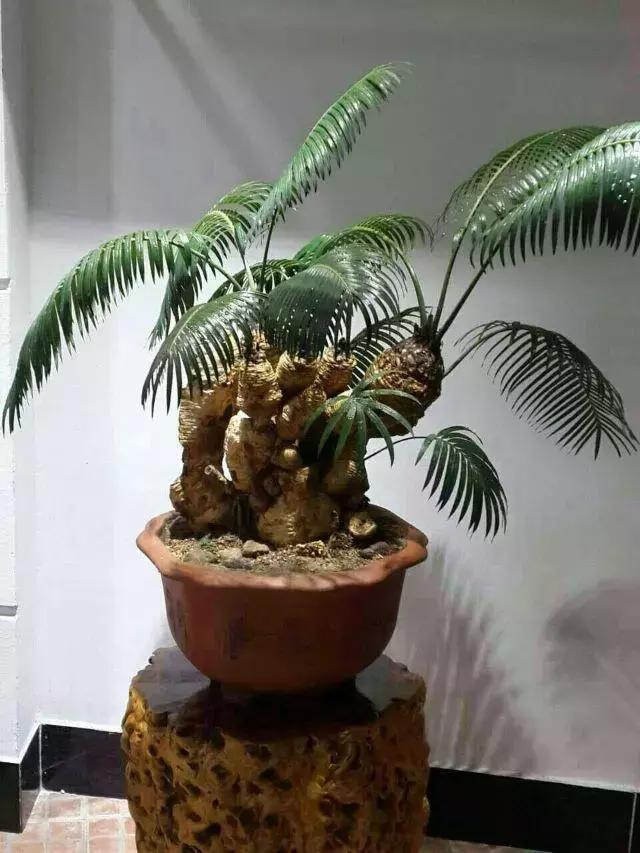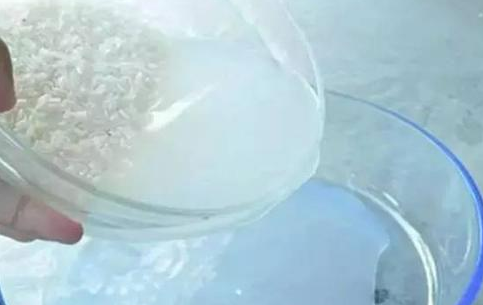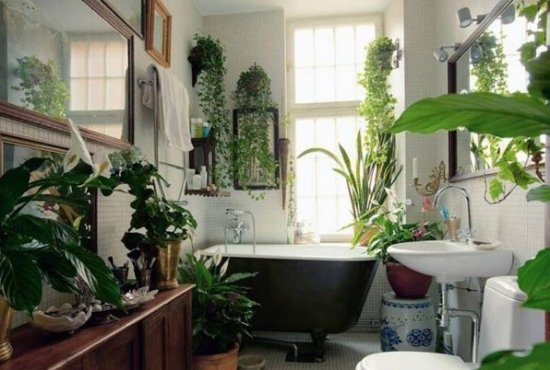Appreciation and maintenance Management of Shishan Cycas
Cycas shishanensis is a rare species of cycas endemic to China, also known as mountain pineapple, cycas pauciflorus, immortal rice, cycas rustata, etc., distributed in Fusui County, Longzhou County, Pingxiang City, Ningming County, Wuming District of NanNing City, Tianyang County, Jiangzhou District of Chongzuo City, etc. in low altitude limestone mountains, often growing in limestone crevices, distributed in clusters or small pieces.
Cycas is Cycadaceae, Cycas evergreen palm-like woody plants, Cycas is often said that the iron tree, one of the oldest tree species in the world. So far, more than 17 species of cycas have been found in China (8 species are previous data in encyclopedia), and all of them belong to the first-class protected plants of the country, mostly distributed in South China, Southwest China and other provinces.

Cycas rockii Cycas sexseminifera (Synonymous Cycas miquelii) has the following ecological characteristics: the trunk is usually not obvious, sometimes it is enlarged into gourd shape, or spindle shape, or disk shape, or cylinder shape, up to 50cm in height and 25 cm in diameter, the base is expanded into sphere shape, gray to taupe, the leaf marks are persistent, the later stage is often shed and smooth, and there is no top fuzz on the stem; the scale leaves are lanceolate, 4.5~8.5 cm long, 1.5~2.5 cm wide, dark brown, and densely covered with short fuzz on the back; Pinna length (30)50~170cm, petiole length 5~63cm, upper two sides with 3~35 pairs of short spines, spines length 0.1~ 0.4 cm, spacing 0.6~ 2.2 cm, pinna 40~81 pairs, horizontally spread, leathery, pinna strip, middle pinna length 7.5~28(40)cm, width 0.5~1.2 cm, apex acuminate, mucronate, base asymmetric, lower side decurrent growth, midvein flat or slightly raised above, obviously raised below, Dark green above, bright, pale green below, leaf margin flat or sometimes reverse roll, leaf axis, petiole and leaf back densely rust-colored pilose. The seeds are small, 1.7 - 2.7 cm long, yellow to orange-red when mature.
Cycas stonehenna is the best one in Cycas genus, which has incomparable ornamental property of other Cycas plants, especially suitable for bonsai cultivation. Stone mountain cycas are generally not tall, grow slowly, rarely more than 50 cm, stone mountain cycas stem hard as iron, not like other cycas if the fish scale, but smooth and delicate, shape some such as gourd shape, some like spindle shape, or cylindrical, the latter oblate, different shapes, or simple and lovely, or vigorous simple, very worthy of appreciation; Stone mountain cycas leaves short green, needle if feathers, oil green bright, evergreen, green God; If planted in plain purple sand basin, with strange stone moss, viewing effect is excellent, is an excellent family office bonsai varieties.
After years of careful cultivation by some research institutions, the cultivation and reproduction technology of Shishan Cycas has made rapid progress. Occasionally, there are Shishan Cycas bonsai sold in the market. Pots friends have the opportunity to buy them. The following flowers and trees will introduce the conservation and management of Shishan Cycas to you.
Many research institutes have carried out all-round research on the acidity and alkalinity of soil in which Cycas rockii grows, but the data are rare, and many people are not very clear about the real growth environment of Cycas rockii in its original place. Cycas shishan is produced in several areas of Guangxi, belonging to subtropical warm and dry climate, soil is limestone soil, field measurement soil pH value is about 7.5, so it should belong to medium-weak alkaline soil, and rich in trace elements, such as iron, magnesium, zinc, manganese and other elements.
Most of the soil in the south is acidic, and most flowers are suitable for growing in weakly acidic soil, so people think so, many data in the introduction of the environment of stone mountain cycas, said to be weakly acidic, should be a mistake (or misunderstanding). However, according to more than 20 years 'cultivation experience of Cycas stonehensis introduced by some plant research institutes, Cycas stonehensis has good adaptability in weak acid soil and can grow normally. However, attention should be paid to trace elements when cultivating cycas in Shishan. If trace elements cannot be guaranteed, acidic soil will also cause yellow leaves or even death of cycas in Shishan.
[Soil] Fertile, slightly acidic sandy loam soil is suitable for planting Cycas in Shishan. If the soil of origin with humus is of course the best, if not can use moldy soil and sand according to the ratio of 3:1 configuration, add a small amount of 0.5% ferrous sulfate or plant ash mixture, or a few horseshoe pieces as a base fertilizer, because cycas for iron-loving plants, preparation of culture soil can be infiltrated with a small amount of iron filings or rusty nails, supplement iron, so that the leaves firm green.
[Flower pot] It is best to use earthen pots and purple sand pots with good ventilation, especially plain purple sand pots. It can be used with Shishan cycas. It can not only ventilate and drain water, but also set off the elegance of Shishan cycas. It is very beautiful. Do not use porcelain basin, see cycad decorated with porcelain basin in flower market, if you buy home must change basin, remember.
[Temperature and humidity] Shishan cycas like wet drought resistance, avoid water, temperature is suitable at 15~20℃, Shishan cycas are cold-resistant, but it is best not to be lower than 5℃. The humidity is 50%-70%, and the leaves can be sprayed with water frequently to maintain humidity.
[Light] Shishan Cycas is a sun-loving plant, suitable for growing in direct sunlight or bright scattered light. It can be fully illuminated in spring, autumn and winter, and it is best to have half shade in summer. Cycas should not be placed in the living room hall for too long, lack of light, slender leaves, leaves green.
[Watering] Shishan Cycas are wet and drought resistant, and avoid water accumulation, especially if the cultivated soil is too sticky and wet, its fleshy roots are easy to rot or suffocate. Therefore, it is necessary to do a good job of moisture control and supply. The principle of watering is "not dry, not watered, watered thoroughly","rather dry, not often wet". Spring and summer leaves grow vigorously, especially in summer high temperature dry climate to water more, morning and evening 1, and spray leaves, keep leaves fresh green. After autumn, it can be watered once every 2 to 5 days to keep the soil dry. In winter, the watering interval should be longer. It is better to be dry. It is easy to rot roots at low temperature and humidity. In addition, it should be noted that every year when the cycas stem top hairs bloom and new leaves are about to be pulled out, water and fertilizer should be stopped, and sufficient light should be ensured. Only after the leaves are fully expanded and the petioles are fully pulled out can they be watered. During this period, rainwater should be prevented from entering the new leaves.
[Fertilization] The limestone environment in which Shishan Cycas live determines the need to supplement trace elements, especially iron, which should be supplemented frequently in order to keep the leaves green and grow healthily. Fertilization principle "thin fertilizer and frequent application", if there is slow release fertilizer, slow release fertilizer can be applied. If not, in the growth season, every half month or so in spring and autumn, apply thin decomposed cake fertilizer water (which adds ferrous sulfate), at least once or twice a year potassium dihydrogen phosphate, summer temperature is too high and too wet do not fertilize, winter if indoor maintenance, growth temperature and humidity appropriate circumstances can apply cake fertilizer water once.
[Diseases and pests] The pests and diseases of Cycas in Shishan are common in scale insects. They can be sprayed with 0% omethoate emulsion or 50% monocrotophos or 80% dichlorvos EC 1000 times. It can also be controlled by stone sulfur mixture or fluoroacetyl ammonium. In high temperature, high air humidity, easy to occur white spot disease, coal pollution disease, carbendazim 50% WP or thiophane 70% WP mixed with water 1000 times, in the morning to spray control of diseased plants.
There are two ways to turn over the pot: the first is to turn over the pot normally, and the second is to turn over the pot when diseases are found. Normal pot turning is carried out before germination in early spring, small pots are changed once every 1 to 2 years, and large pots are changed once every 3 to 4 years. When changing pots, first knock the edge of the flowerpot with your hand, then hold the leaves with your hand and take out the flowerpot side with soil. Be careful not to break the leaves. Strip off the edge of the mud ball and the soil at the upper end. Keep 1/3 of the old soil, properly trim the old roots, fibrous roots and old leaves, keep the green and straight leaves, and then plant new soil. After pouring root water, put it in the shade for half a month, it can be managed normally. If it is found that Cycas shishan does not grow new leaves or leaves yellow and wilting for 2~3 years, and the treatment effect is not good, it is necessary to check whether the root system is rotten in time. At this time, it is necessary to turn over the pot, check the reason, cut off the diseased root, replace the soil, cultivate the sheep root with plain sand, and maintain it normally after returning to normal.
[Propagation] Stone mountain cycas generally adopt seed propagation and tillering propagation, but also can adopt stem cutting propagation.
[Pruning] After new leaves grow out every year, yellow leaves and deformed withered leaves should be pruned off, and some leaves with pests and old leaves should also be pruned off. In addition, some places that grow too densely should also be pruned, so as to increase ornamental value. After pruning, in order to prevent glue flow and bacterial infection, plant ash or carbendazim powder should be applied to the scissors in time.
Time: 2019-04-22 Click:
- Prev

Make good use of the knack of panning rice water, watering flowers, fertilizing and maintenance is easy all the year round.
Many friends have heard that rice watering is very good. After each cooking, the remaining rice water is poured into the flowerpot, but soon they find that the flowers and plants at home not only grow poorly, but even rot roots, yellow leaves and die. This is because they have not mastered the correct method of watering flowers with rice washing.
- Next

9 kinds of plants suitable for breeding in toilet
Green plants are either on the balcony or in the living room. Have you ever thought of putting plants in the bathroom? Through plants to absorb and purify the smell, but also add some green, is it killing two birds with one stone? Let's talk about what kind of plant tiger tail orchid is suitable for breeding in the bathroom. The leaves of tiger tail orchid can absorb the water vapor in the air by themselves.
Related
- Fuxing push coffee new agricultural production and marketing class: lack of small-scale processing plants
- Jujube rice field leisure farm deep ploughing Yilan for five years to create a space for organic food and play
- Nongyu Farm-A trial of organic papaya for brave women with advanced technology
- Four points for attention in the prevention and control of diseases and insect pests of edible fungi
- How to add nutrient solution to Edible Fungi
- Is there any good way to control edible fungus mites?
- Open Inoculation Technology of Edible Fungi
- Is there any clever way to use fertilizer for edible fungus in winter?
- What agents are used to kill the pathogens of edible fungi in the mushroom shed?
- Rapid drying of Edible Fungi

